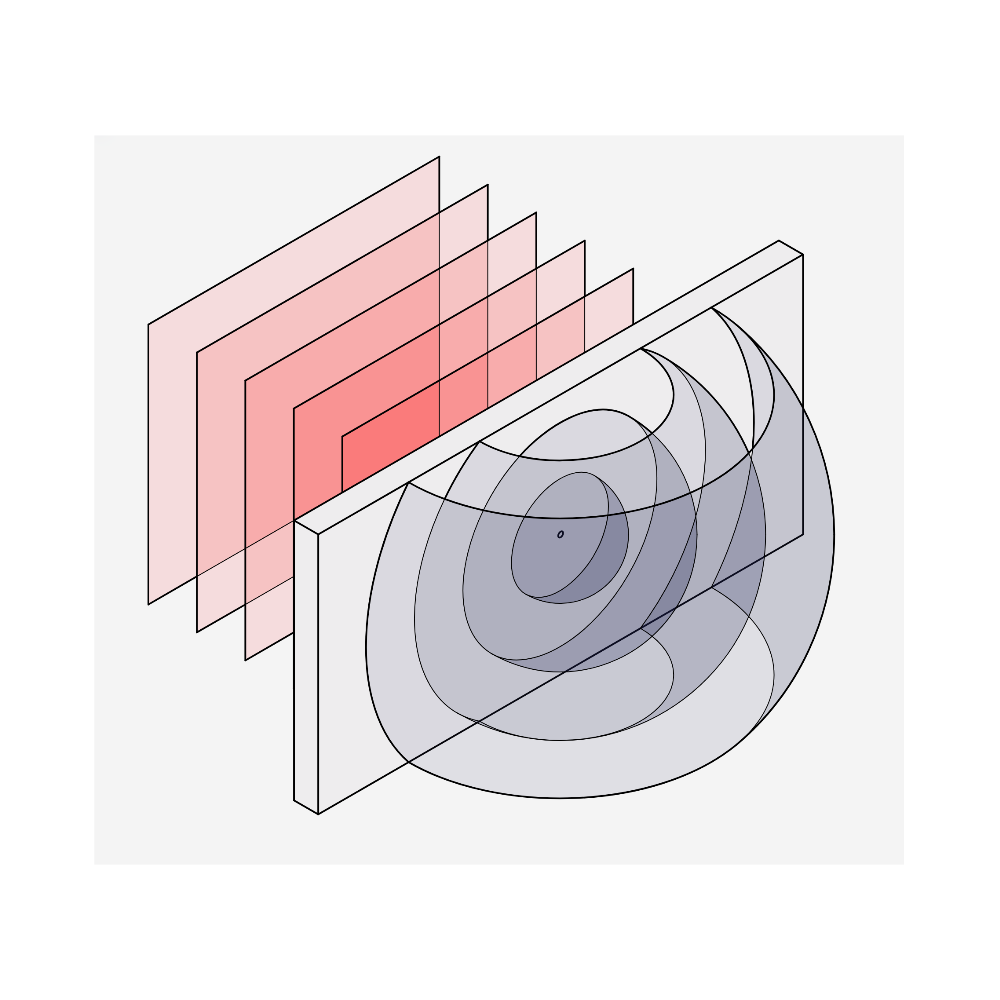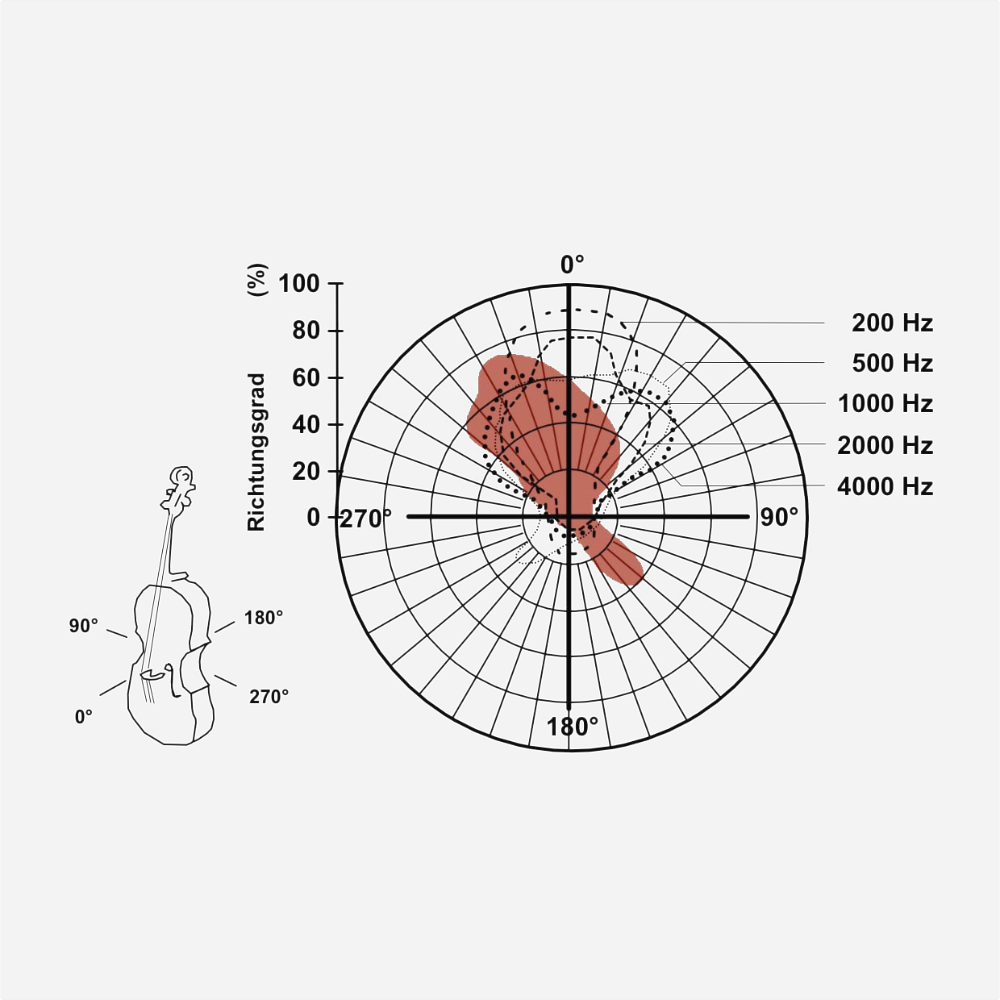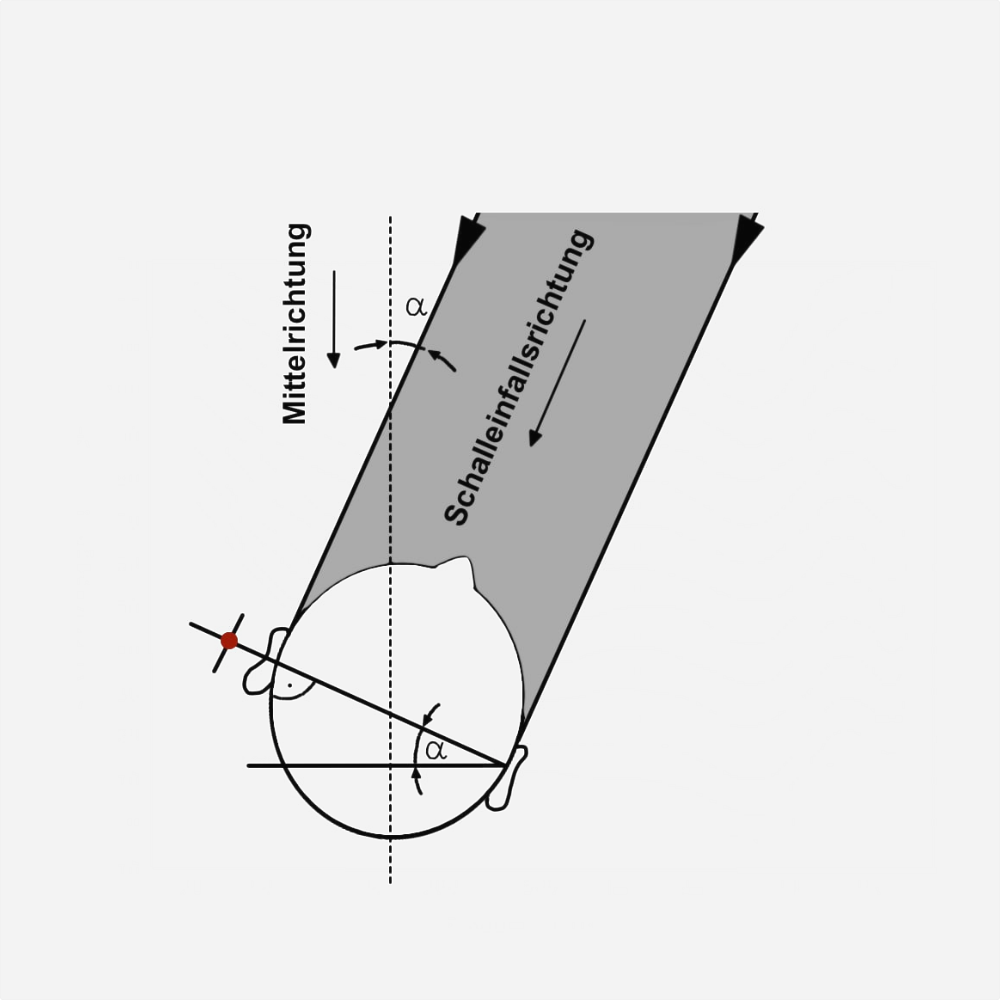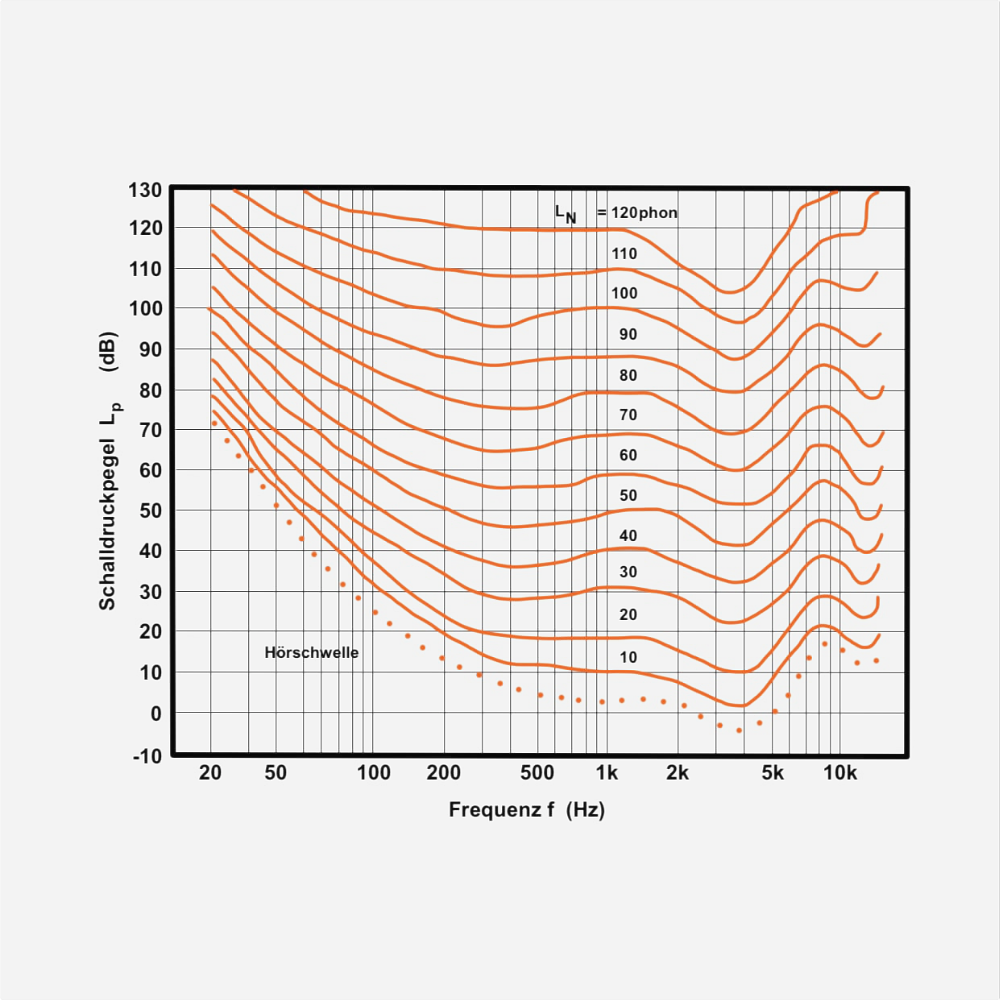Propagation of sound
Reflection of a sound wave occurs whenever the sound wave encounters an area of high or low density or, for us, higher or lower acoustic impedance. This does not occur during normal sound propagation in air, but only when the wave encounters an obstacle such as a wall.
Interference refers to superposition patterns of sound waves. If, for example, two sound waves arrive in phase at a certain point in space, theiy add up to twice the sound pressure (constructive interference). The signal becomes up to +6 dB louder at this point. If, however, the sound waves arrive in exactly opposite phase to each other, their sound pressure curves cancel each other out and the sound pressure can be reduced by -∞ dB to zero (destructive interference). In room acoustics, these patterns occur primarily at low frequencies whose wavelength coincides with one of the room dimensions. This is referred to as room modes or resonances. The wave is reflected back and forth between the walls, forming local peaks or cancellations. To solve this problem, low-frequency absorption can be introduced into the room, or parallel walls can be avoided from the outset.
Back



